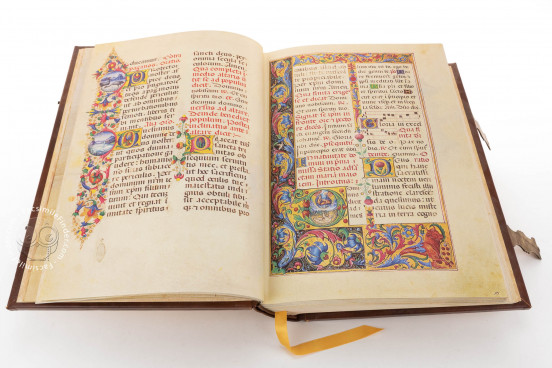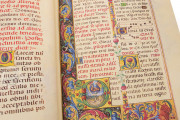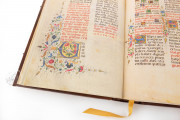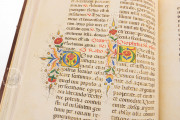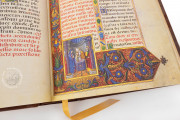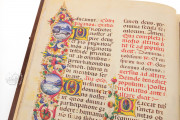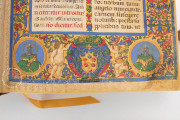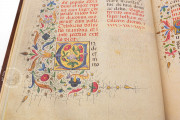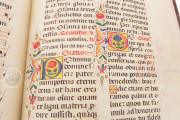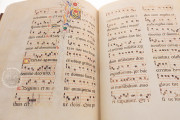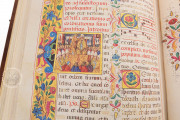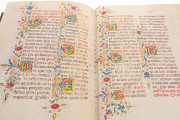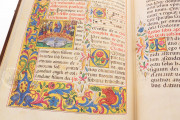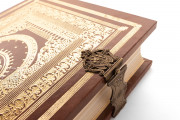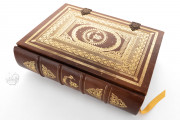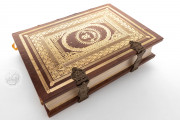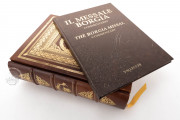The Borgia Missal, sometimes called the Medici Missal, is a richly illuminated Christian liturgical manuscript painted in Rome between 1492 and 1494. It was commissioned by Giovanni Borgia, cousin of Pope Alexander VI, on the occasion of Giovanni being named cardinal. The manuscript boasts twenty-two miniatures. The borders and initials feature detailed, brightly colored floral and vegetal motifs. After the book came into the possession of Cardinal Guido de' Medici in the sixteenth century, the Borgia coats of arms were overpainted with those of the Medici family.
This authentic work of art, enriched with splendid miniatures, offers not only artistic and religious significance but also provides rare iconographic testimony to historical and cultural events of particular importance from the period it represents.
A Work of Art Worthy of the Pope
The Borgia Missal represents one of the earliest Sunday missals created according to the ceremonial standards established in 1488. Given its prestigious function, the missal required execution by expert calligraphers and lavish decoration, resulting in an authentic masterpiece of illuminated artistry.
Historical accounts suggest the missal once belonged to the collection of codices in the Sistine Chapel, reserved exclusively for the Pope, cardinals, and high prelates of the Church for solemn masses celebrated in the papal chapel.
A Jewel of the Medici Family
The manuscript's exceptional beauty and distinctive character attracted attention even after the Borgias' passing. Cardinal Guido de' Medici, cousin of Pope Clement VII, subsequently adopted it as his personal missal, commissioning the prestigious symbol of his family to replace the Borgia emblem on the volume's cover.
Upon his appointment as Archbishop of Chieti, Guido de' Medici transported the codex to this Abruzzese city, where it has been preserved for centuries.
From the Workshop of Pinturicchio
The value of historical manuscripts derives substantially from the beauty and artistic merit of their miniatures—small jewels of art often produced by artists who have since achieved historical renown.
The Borgia Missal was decorated by four distinct masters with various collaborators, apparently affiliated with the Umbrian school represented in Rome during the final decade of the 1400s by Pinturicchio's workshop.
We have 1 facsimile edition of the manuscript "Borgia Missal": Messale Borgia facsimile edition, published by Vallecchi, 2001
Request Info / Price
